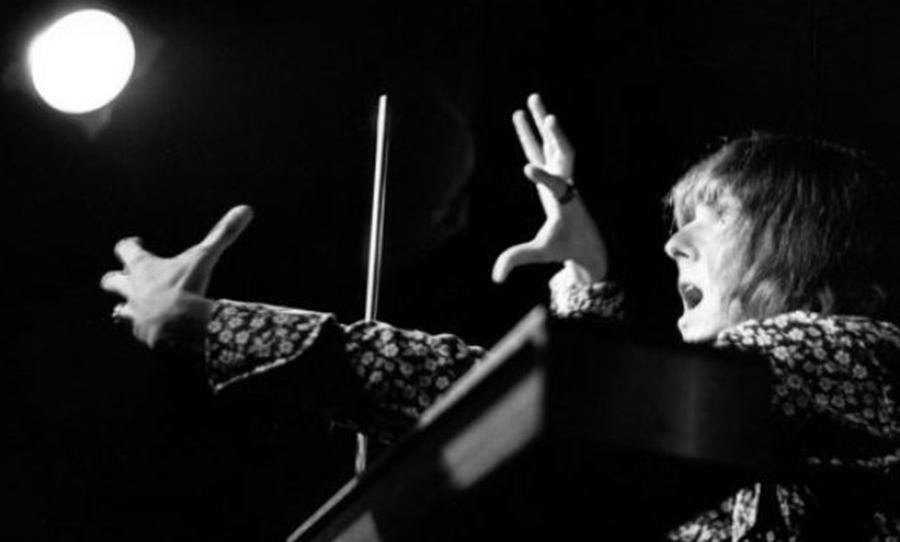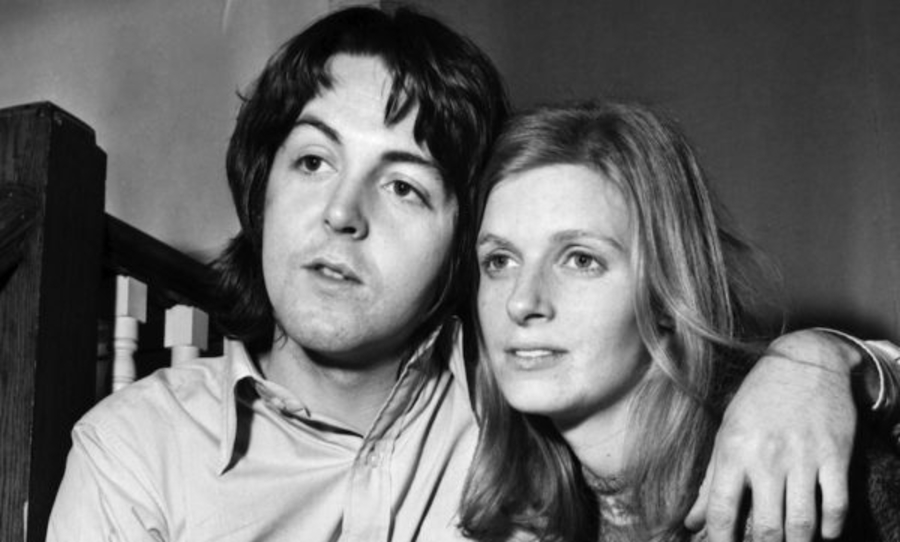The theremin, named after Russian physicist/inventor Leon Theremin, is a mysterious and singular contraption that’s proved to be the stealth hit of electronic instrumentation. It wasn’t actually meant to be a musical device, so much as an experimental government-funded proximity sensor. Despite these turgid beginnings in 1920, the theremin went on to become the world’s first-ever mass-produced electronic instrument by 1929.
The only existing musical instrument one can play without touching, the theremin consists of two metal antennae that the player must make a series of hand gestures at to make noise. Specifically, the distance between the player’s hand and the antennas, respectively, control pitch and volume. The closer your hand is to the pitch antenna, the higher the note; the closer to the volume antenna, the quieter.
From Bob Moog to the Beach Boys, we take a look at those who turned the theremin form a government-funded experiment to a full-blown pop culture icon.
After the RCA company launched commercial production (of the “RCA Thereminvox”), the theremin initially failed to take off, with the exception of the works of classical musician Clara Rockmore. However, with the presence of certain film scores, avant-garde rock bands, and a fellow called Robert Moog, the theremin gradually but surely made its mark on pop culture. Here are its most influential uses.
Samuel J Hoffman
The theremin’s entry into pop culture really began with a fellow by the name of Samuel J. Hoffman. Doctor by day, Hoffman began studying the instrument in the ‘30s and went on to become the lone thereminist (and additionally, violinist) in the L.A. Musicians Union. In 1945 Hoffman’s unique set of skills attracted the attention of composer Miklos Rosza, who was working on none other than Hitchcock’s Spellbound – it thus became the first-ever film to use the theremin in its score.
The success of Spellbound spring-boarded more lucrative film score offers for Hoffman, including The Day The Earth Stood Still (1951). Composed by Bernard Hermann, the film’s entirely electronic score featured not one but two theremins, as well as electronic organs, vibraphones, and amplified strings. (In the words of TCM.com, “the jarring sounds perfectly captured the anxieties underlying this tale of a UFO landing in the middle of Washington, D.C.”)
Lothar & the Hand People
While being among the many of late ‘60s psychedelia, Lothar and the Hand People were singular in being the first-ever rock band to use a theremin in its ensemble. This instrument itself went by the name of “Lothar,” of which the Hand People were so enamoured they named their whole band after it.
Played by vocalist John Elemin, Lothar the theremin was performed live for the first time in November of 1965. No mere gimmick, Lothar was central to the sound of the Hand People, as demonstrated by Elemin’s solo with it on Kids Are Little People. Such was this instruments impact, it even inspired a group of musicians in Boston to form a theremin band called The Lothars.
The Beach Boys and Paul Tanner – sort of
Ironically the most famous of all theremin uses in pop music is an example that wasn’t technically a theremin. Indeed, the Beach Boys’ iconic track Good Vibrations featured an electro-theremin, invented in the ‘50s by a trombonist named Paul Tanner (in collaboration with inventor Bob Whitsell) as a theremin substitute that was easier to play.
Tanner himself performed with the instrument on said single, in addition to I Just Wasn’t Made For These Times (off the one and only Pet Sounds) and Wild Honey. (He, like Hoffman before him, also showed off the electro-theremin on soundtracks, including that of sitcom My Favourite Martian).
However, Tanner declined the Beach Boys’ offer to tour with them in 1966, instead referring them to none other than Bob Moog for another pseudo-theremin (see below). After recording two orchestral albums with the electro-theremin – Music for Heavenly Bodies (1959) and Music From Outer Space (1962) – Tanner eventually opted not to compete with the wave of late ‘60s keyboard synths and donated his invention to a L.A. hospital for audiology work.
Led Zeppelin
Jimmy Page has been making the theremin his own since 1969. He popularised the Sonic Wave theremin – a contraption that can be plugged directly into one’s guitar – as heard in the classic Whole Lotta Love, which Page performed live with a Maestro Echoplex from April of ’69 to July 1980. “I always envisioned the middle [of the song] to be quite avant-garde,” Page told Guitar World.”The Theremin generates most of the higher pitches and my Les Paul makes the lower sounds.”
From March to May of 1971 Page also used a double-stacked theremin (for double the avant-garde shrieking), which blessed such venues as England’s Mayfair Ballroom and Denmark’s KB Hallen. Another notable theremin usage took place in one of Page’s extended solos in 1977 that also featured a bowed guitar.
Bob Moog
Pioneering legend Robert Moog kicked off his lucrative career as a humble teenager building his own theremins in his father’s basement. Said instruments were built from specs Robert found in the magazine Radio News (which would later publish his own theremin design). He also earned himself a feature in Electronics World, in which he offered readers en masse a kit to build their own theremins! By 1953, at age 19, Bob was official founder of the Moog Company and making a living off of theremins, which funded his years through both college and grad school; over the course of 1961, notably, he sold 1000 kits at $50 each – not bad for a student. “It was a nice instrument!” Bob once summarised.
(Sidenote: One of these consumers, fatefully, was composer Herb Deutsch, who used the theremin to teach aural learning. Deutsch later requested several more specially made instruments from Robert, including a keyboard, voltage-controlled oscillator, amp, and filter – components that, altogether, made what we call the Moog synthesiser.)
Moog continued to honour the theremin long after exceeding its own fame: during the late ‘80s he had the honour of repairing the original theremin belonging to classical virtuoso Clara Rockmore, an occasion that Moog called “a high point of his professional career.” (He also co-produced Rockmore’s album, The Art of the Theremin.) Moreover, Moog featured in award-winning documentary Theremin: An Electronic Odyssey; supplied a foreword for the book Theremin: Ether Music and Espionage; and met Leon Theremin himself, an experience Moog recorded for Keyboard Magazine.
Honourable Mentions
Possibly no musical outfit loved the theremin more than The Lothars – the band inspired by the Hand People’s own Lothar. Such was the Lothar’s devotion they used three theremins on debut Meet the Lothars (1998), and no less than four on the aptly titled Oscillate My Metallic Sonatas (2000). Sadly the group never made it to the sort of world-class renown as others in this article, but they serve as proof that Theremin’s impact has been a lasting one.
Brian Jones of The Rolling Stones also employed a theremin on ’67 albums Between the Buttons (on Please Go Home) and the contentiously psychedelic Their Satanic Majesties Request. On the latter, the theremin can be heard alongside such other monstrosities as the mellotron on 2000 Light Years From Home.
Elsewhere, the theremin has been embraced by everyone from The Pixies (Velouria) to Erykah Badu (Incense), and Mastodon (Stargasm).



